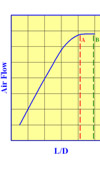Stairway to heaven
 It always surprises me how often people approach a recognised expert in a particular subject and yet fail to act on their advice. We can all think of occasions when say, consulting a solicitor or lawyer, since theirs is a world of uncertainty and risk, it might be reasonable to seek alternate council. But in seeking advice from a reputable camshaft supplier it seems silly to ignore their advice and go for a completely different cam to that suggested. And yet, I am told, it still happens.
It always surprises me how often people approach a recognised expert in a particular subject and yet fail to act on their advice. We can all think of occasions when say, consulting a solicitor or lawyer, since theirs is a world of uncertainty and risk, it might be reasonable to seek alternate council. But in seeking advice from a reputable camshaft supplier it seems silly to ignore their advice and go for a completely different cam to that suggested. And yet, I am told, it still happens.
In selecting any new performance camshaft the starting point must surely be the catalogue. For within, alongside your particular make and model of vehicle, will be an array of other numbers under the headings of timing – intake and exhaust, and the subject I would like to touch on here today - valve lift.
The choice of valve lift is pretty straight forward – or is it? While it is definitely true that for a given inlet and exhaust timing a higher valve lift should give more airflow, it doesn’t always necessarily mean that a higher lift will increase engine performance. It’s all tied up with the speed of sound. Let me explain:
The piston travelling in the cylinder bore on its intake stroke starts at zero velocity at the top (top dead centre) and finishes at zero velocity at the bottom (BDC). In between, it increases up to a maximum at its mid-way, 90° mark and slows down again to zero at the bottom. During the first part of the intake stroke the cam will be opening the valve allowing air to flow until at its maximum lift (represented by point ‘A’ in the diagram) and close to that of maximum piston velocity, the flow into the cylinder will be at or near its peak. If we replace the camshaft with one of higher lift (represented by point ‘B’ in the diagram) then it doesn’t matter how much more valve lift we have, no more air will flow and the effective restriction will be in the port and not in the position of the valve. More usually, this restriction is immediately behind the valve and known as the ‘throat’. Here designers try to accelerate the airflow and guide it between the valve and its seat, prior to its discharge into the cylinder.
At low engine speeds and in an unthrottled engine therefore, the velocity of the piston governs the airflow. But at high engine speeds, when the piston is travelling down much faster, the air flowing through this throat will approach that of the speed of sound at the particular temperature and pressure prevailing. Although the piston might wish to draw in air at a higher speed, this throat will be become what is known as ‘choked’ and no further increase in the mass of air flowing will take place. As a result no improvement in engine power output will be demonstrated either. An inappropriately high cam lift will consequently not improve performance but certainly will introduce unnecessary stresses and strains into the valve train.
The moral of the story is therefore, if in doubt, always get your cylinder head airflow tested by a reputable organisation and take advice from the cam supplier. After all it is in his interest to make sure that you go away a happy customer.
Written by John Coxon.